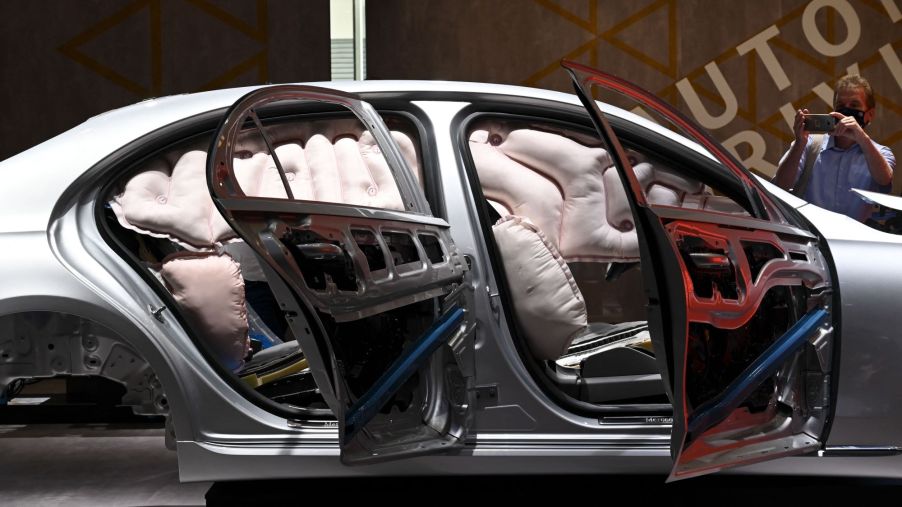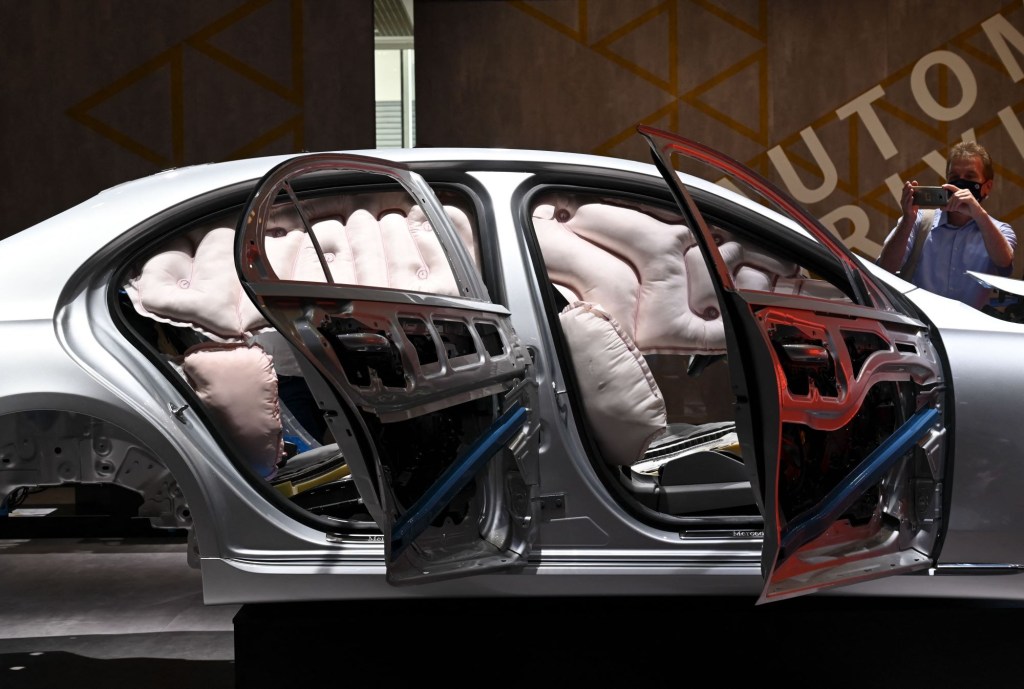
Everything You Need to Know About Airbags and How They Keep You Safe
Before automakers started equipping cars with airbags, your seatbelt was the only thing keeping you safe in a car accident. Initially, cars carried only frontal ones located in the center of the steering wheel or inside the dash. However, over time cars began to feature designs to protect drivers and passengers from danger in nearly every direction.
How do airbags work?

According to Lifewire, these “systems typically consist of multiple sensors, a control module, and at least one airbag.” The sensors detect a collision by monitoring multiple data streams, including wheel speed, acceleration, deceleration, and more. Once the sensors detect a crash, they send a deployment signal to the airbags.
Packed inside each airbag are chemicals designed to rapidly fill the airbag with nitrogen gas when ignited by the signal from the sensors. The entire process happens within about 0.03 seconds. As a result, airbags deploy with significant force, so you shouldn’t put your feet on the dash while driving or let small children ride in the front seat.
How do they keep you safe?
Information from the National Highway Traffic Safety Administration (NHTSA) indicates that passenger cars manufactured after 1998 in the United States must carry airbags to protect occupants in the front seat. Mandates for SUVs, vans, and pickup trucks followed a year later. Today, most automakers include side airbags as either standard or optional equipment.
Although designed to work in conjunction with seatbelts, the bags deploy to provide a cushion between the people inside the vehicle and hard interior surfaces in a crash, whether the people are using seatbelts or not. This safety feature does not replace the need for seatbelts as they may not prevent occupant ejection in an accident, and seatbelts only work if worn correctly.
The NHTSA estimates that in 2017 alone, frontal airbags saved 2,790 lives in the United States.
Can you turn it off?
In some vehicles, it’s possible to turn off the passenger-side airbag. While there are some instances where turning off an airbag is helpful, understanding the risks involved is critical. Modern systems sense the presence of passenger seat occupants to reduce unnecessary deployment in the event of a crash.
In vehicles equipped with a mechanism to deactivate passenger-side ones, the switch is typically located on the dash or center console closer to the vehicle’s passenger side. Often this switch requires the vehicle’s key to prevent unwanted deactivation. Disabling the driver’s side will require a skilled mechanic as accidental deployment is possible and can cause significant damage to your car’s interior.
Can airbags be re-used?
Airbags are single-use items. The chemical propellents that inflate the airbag burn up when it deploys, and the carefully packed airbag expands from its compartment and hangs deflated after doing its job. The compartment from which it erupted, whether the steering wheel, dash, or door panel, incurred damage beyond repair. The deflated airbag and interior damage will require professional hands to replace, but hopefully, they prevented any injuries to the vehicle’s occupants.



